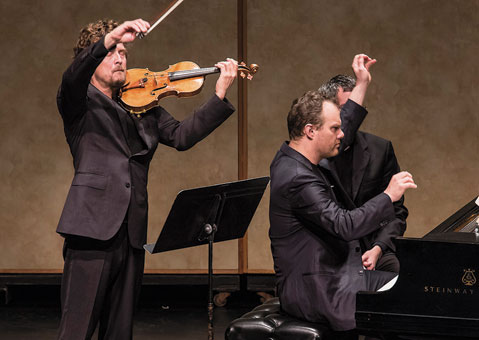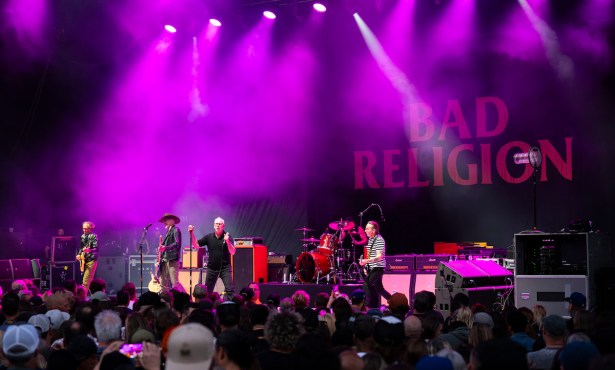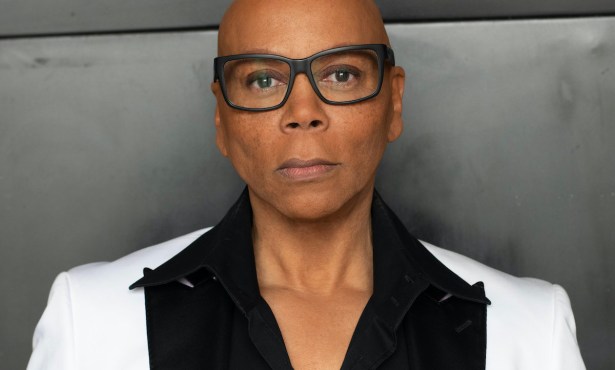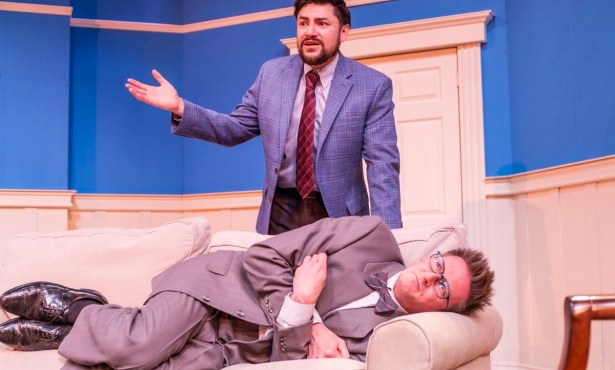CAMA Presents Tetzlaff-Vogt Duo
Renowned German Musicians Performed at the Lobero

Two internationally renowned classical musicians shared the Lobero stage with the Berlin and New York Philharmonic last Monday. Both German-born violinist Christian Tetzlaff and pianist Lars Vogt have an exquisite German-in-the-pocket pure tone — always bull’s-eye pitch with rich and delicate overtones. Tetzlaff mostly played with his eyes closed and gently bended his knees as he swayed to the music; Vogt, intense but always relaxed, had a plum cherry sound with light tannins. They presented a well-balanced program, displaying their remarkable technical skill and stylistic understanding of 200 years of European art music tradition including Mozart, Bartók, Webern, and Brahms.
Wolfgang Mozart: Sonata for Piano and Violin in B-flat Major, K.454. Mozart, of course, is the undisputed wunderkind definition of genius: pure musical beauty and perfection in every balanced note he wrote. The violin’s melodic lines were the gentle breeze caressing, the arpeggiated piano lines a comfortable hammock. The duo had a majestic and moving crescendo: I could feel nostalgia trying to break through my tear ducts.
Béla Bartók: Sonata for Violin and Piano No. 1, Sz. 75. Bartók is considered the unofficial gateway drug to the modern period. He is the innovator of quartal harmony (chords based on fourths instead of thirds), abstract tritonal relationships, and percussive piano techniques. Not only did he steer the course of Western music, but most great jazz pianist have studied his piano concertos with a microscope. This sonata was intense and dreamy — a hazy mist of Humphrey Bogart looking for bad guys — featuring frenzied up-and-down arpeggiated violin with punchy piano stabs: thunder and brimstone but never losing its eerie sul ponticello (scary-sounding effect played near the violin bridge) charm. They were dripping with sweat at the end of that Bartók piece. Super intense.
Anton Webern: Four Pieces for Violin and Piano, Op. 7. Webern was a scholar of early music, a prized pupil of Schönberg, and, unbeknownst to him, a cult leader of the school of Webern. Every composer after him has been making the academic rite of passage to decipher his music, which is a particular approach of melding relationships between different intervals in different instrumental lines within a Renaissance architecture. Four Pieces was a sci-fi silhouette that featured 10,000 spiders sprinting toward the ceilings: silence, stillness, and then unrelenting violin vibrato.
Johannes Brahms: Sonata for Violin and Piano No. 3 in D minor, Op. 108. Brahms, a brilliant star in the shadow of Beethoven, was in the boxing ring with Wagner for most of his career, fighting for the future of Germanic music. The Brahms sonata ventures into Beethoven land and has a sweet ballad in the second movement. You can hear a lot of Bach sensibility in the latter part of the piece, as Brahms was also a master scholar of counterpoint. The duo did a superb job of making every line stand out through lush and articulated brush strokes.
Encore: Antonín Leopold Dvořák: Sonatina. Czech composer and contemporary of Brahms, Dvořák also wrote his music in the established Beethoven style. His sonatina featured his trademark galloping folk-dance rhythms; tear-jerker, slow melodic passages; and fiery temperament.
The show ended with a standing ovation paying homage to Tetzlaff and Vogt, masters of the German sound.



